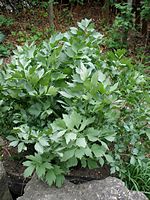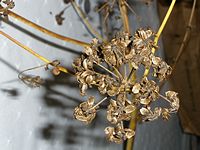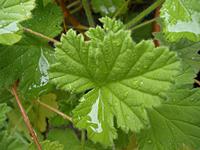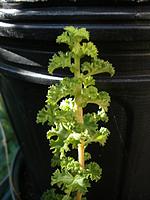What Is Lovage
Lovage is a leafy perennial herb that has a celery-like scent and flavor.
Sometimes the flavor and aroma of the lovage herb are said to resemble the liquid seasoning Maggi sauce.
Easy to grow, lovage can last for years once it’s planted.
The entire lovage plant is edible, with the tender leaves and hollow stems being the most commonly used parts of the plant.
The small yellow flowers of lovage are arranged in umbels, and attract a host of beneficial insects to the garden.
Lovage is a real treat in the springtime. Bright green new growth of the lovage plant returns early in spring, being one of the first plants to sprout in the spring garden.
Lovage is not commonly found in the spice rack and fresh herb sections at the grocery store. So, to enjoy this versatile herb in your kitchen, plant your own lovage in a corner of your garden.
Latin name: Levisticum officinale
How To Grow Lovage
Planting and growing lovage is the best way to ensure you have supply of this herb on hand for your recipes.
The lovage herb is an easy to grown herb. Lovage requires little care to thrive and grow into tall productive plant quickly.
Add one lovage plant to the back of any kitchen garden or perennial border, for a steady supply of celery-flavoured leaves.
Because lovage is a tall and vigorous plant, often growing to a height of 5 – 6 feet (2 meters), plant it at the back of the garden.
Usually one lovage plant is enough for a home garden.
Because one lovage plant is usally enough, it is easiest to start growing lovage from a nursery seedling, or a division from a fellow gardener’s mature plant.
Lovage can also be started from seed. To grow lovage from seed, sow the seed in late summer to early fall in your garden.
Lovage grows in full sun to partial shade. It is hardy from plant hardiness zone 5 through to 8. You may be able to find lovage returning in spring down to zone 3, if grown in a protected area.
The lovage plant dies back to the ground every winter, only to return bright and strong each spring.
And, lovage herb plants tend to be long-lived. I’ve had my current lovage plant growing strong for over 10 years now.
To Bloom Or Not To Bloom
Whether to snip off the flower stalks as they appear, or leave them to go to bloom is a matter of choice.
If you want to encourage bushy growth, cut off the flower stalks as they appear, and harvest your lovage frequently.
Lovage flowers attract a host of beneficial insects. So, if you garden organically and/or are looking to attract beneficial to your garden, let your lovage plant bloom. The umbels of yellow flowers also add interest to the back of a perennial garden.
Cut off the seed heads before they ripen to keep volunteer lovage plants at bay.
Propagating Lovage By Root Division
Lovage is easy to propagate by root division.
In the spring just as the leaves start to emerge, cut divisions from the outer edges of an established lovage plant. Ensure that each root piece has a leaf shoot attached.
Plant the newly divided shoot promptly in its new location, or offer up a lovage shoot to a gardening friend.
Harvesting and Storing Lovage
Harvest lovage leaves whenever you need them.
Lovage leaves and stems can also be harvested as they grow throughout the season, to store for winter use.
Harvest seeds when they are ripe. Lovage seeds are ripe when the tiny fruits encasing the seeds start popping open.
Drying Lovage.
Lovage leaves and stems can be dried easily.
Use the smaller stems, as the stems tend to become tough as they grow larger.
Store dried lovage in an opaque container or in a dark area, away from any sunlight. Light tends to cause dried lovage to lose its green colour quite readily.
For instructions on how to dry lovage, or any other leafy herb, see my post
How To Dry Herbs – Drying Italian Herbs
Freezing Lovage.
Lovage leaves and stems can also be frozen, to be added to soups and stews.
Freeze entire stems and leaves to toss into a soup stock. Or chop up the leaves and/or stems, and freeze in ice cube trays to add to any cooked dish as needed.
Some sources suggest to blanch lovage leaves before freezing. I’ve never done that, and the frozen lovage herb has been perfectly fine used in my cooked dishes.
Lovage Seed.
Lovage herb seeds are dark brown, and oblong shaped. Once harvested from your lovage plant, store the seeds in a dry container with your other spices.
Using Lovage
Use dried and frozen lovage in any cooked dishes where you want to add a celery-like flavor. Lovage is especially good used in soups, sauces, casseroles, and stews.
Use the fresh lovage herb leaves as you would dried or frozen lovage. Fresh lovage leaves are also great added to salads, or used as a garnish.
If you are looking for a savory easy-to-care-for herb to add to your herb garden, then give the lovage herb a try.
To your herb gardening success,
Barb
Copyright © 2011 www.HerbGardenGal.com. All rights reserved.
_________
Want to use this article in your Ezine or Website? You can, as long as you include the complete article and the Copyright information.




